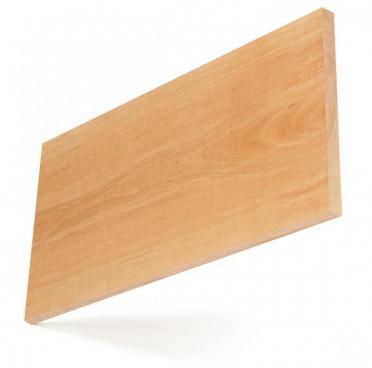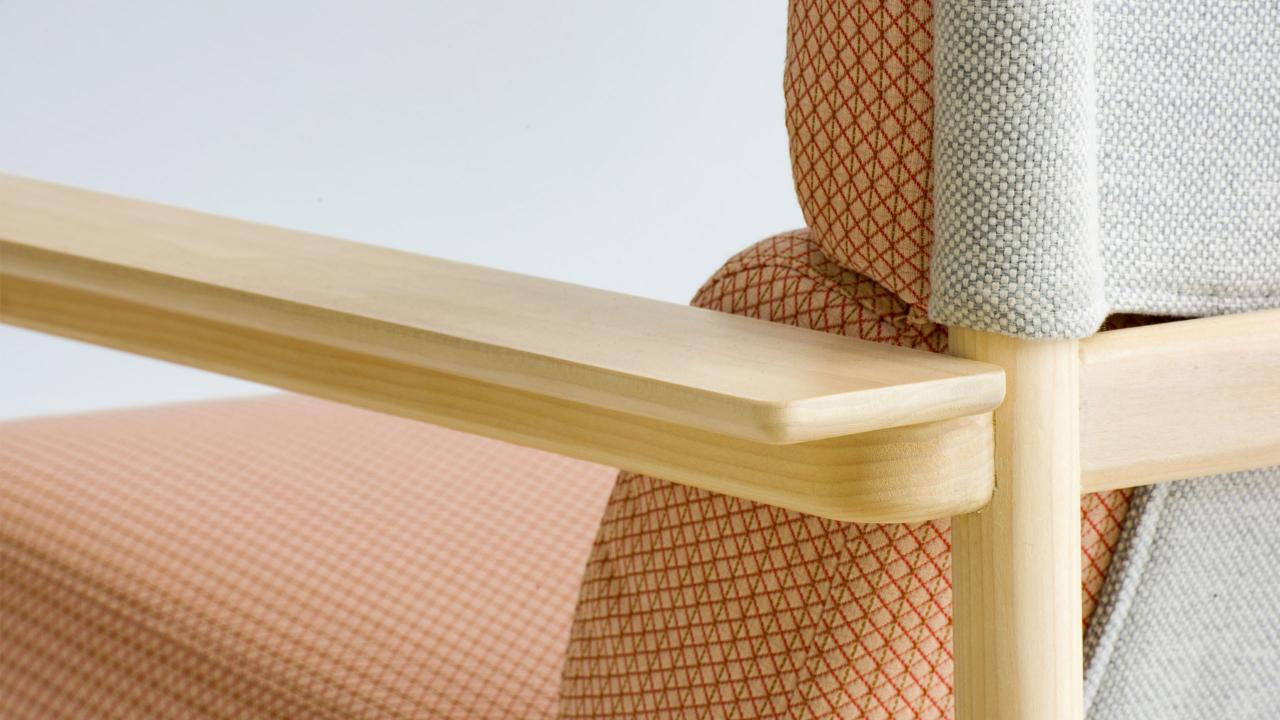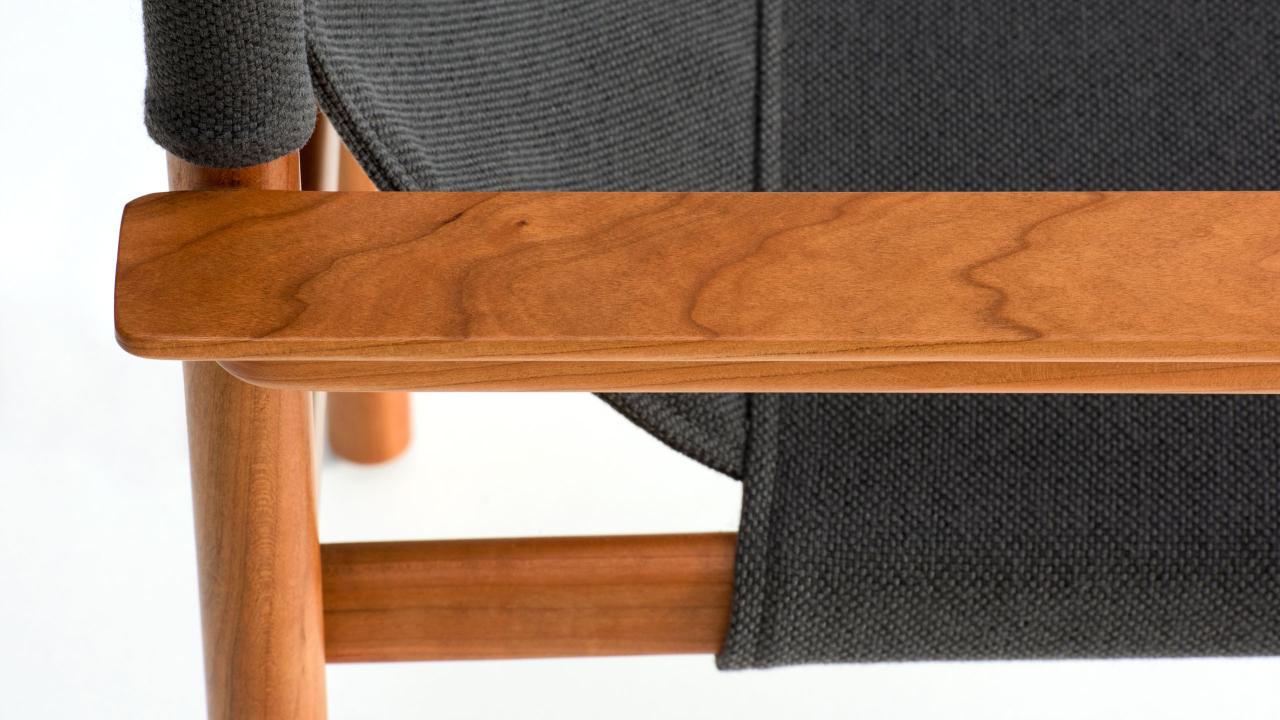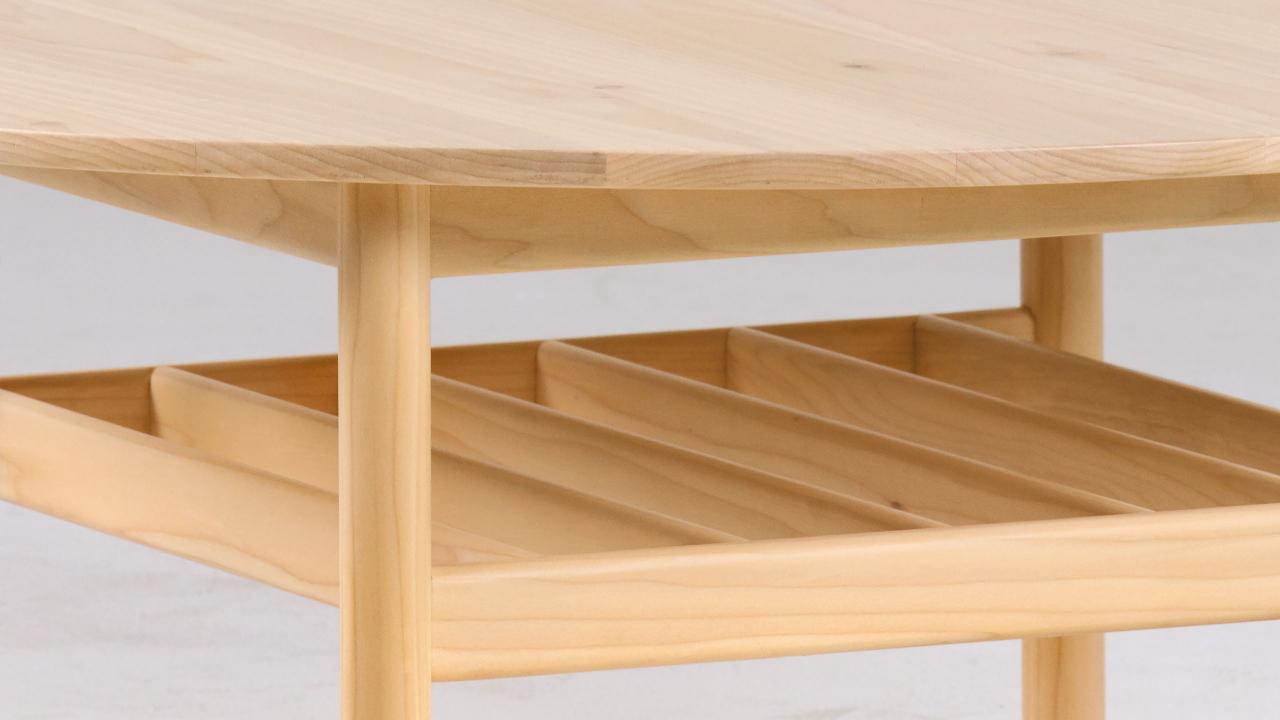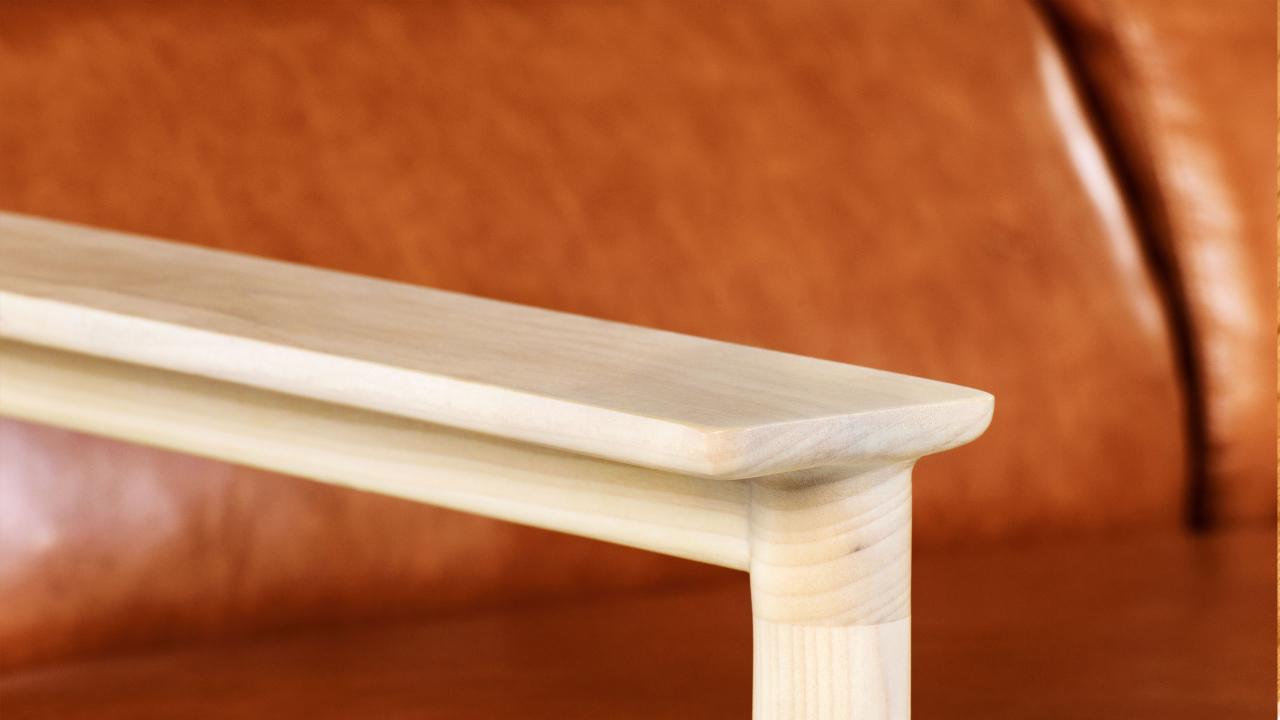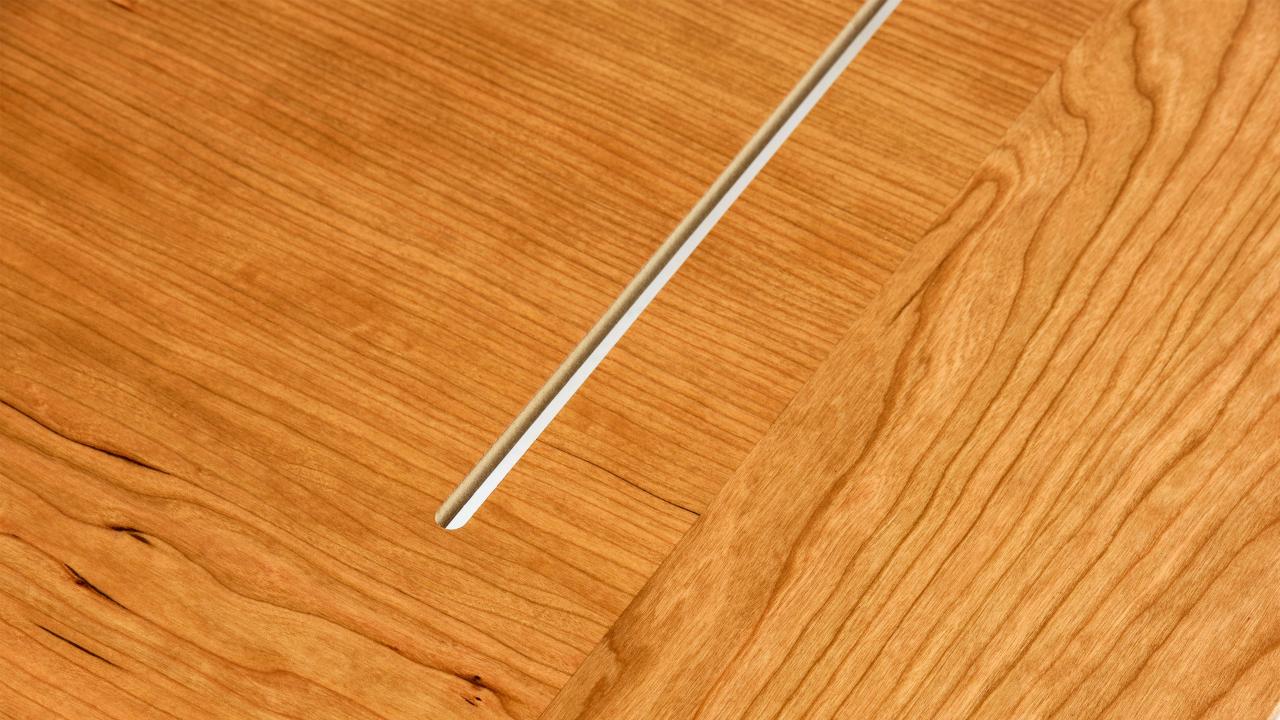Material
American tulipwood
Commercially American tulipwood, known domestically as yellow poplar, is one of the most prolific hardwood species from the U.S. hardwood forests and is unique to North America. Forest Inventory Analysis (FIA) data shows U.S. tulipwood makes up 7.7% of total U.S. hardwood growing stock and while 12.8 million m3 are harvested each year, more than 32 million m3 of American tulipwood grows naturally in the hardwood forests during the same period. Tulipwood has less strong grain characteristic than species such as ash and oak and exhibits a marked difference between the sapwood and heartwood. The sapwood is creamy white whereas the heartwood can vary from pale yellow or brown to green and purple in extreme cases. The wood darkens on exposure to light. Tulipwood has extraordinary overall strength properties relative to weight, making it highly suitable for structural applications, such as glue-laminated beams and cross laminated timber (CLT).
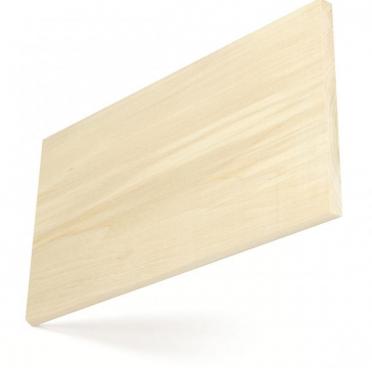
American cherry
American cherry is a supreme hardwood species from the U.S. hardwood forests and is unique to North America, with warm colour tones and superb finishing qualities. Forest Inventory Analysis (FIA) data shows U.S. cherry growing stock is 3.0% of total U.S. hardwood growing stock and that while 4.3 million m3 is harvested each year more than 11 million m3 of American cherry is growing naturally across the U.S. forests during the same period. The heartwood of cherry can vary from rich red to reddish brown and darkens on exposure to light with time. The sapwood is creamy white. Being hard and stable when dry, the wood is very easy to stain and finish to an excellent surface. It is highly prized for furniture and interior joinery.
